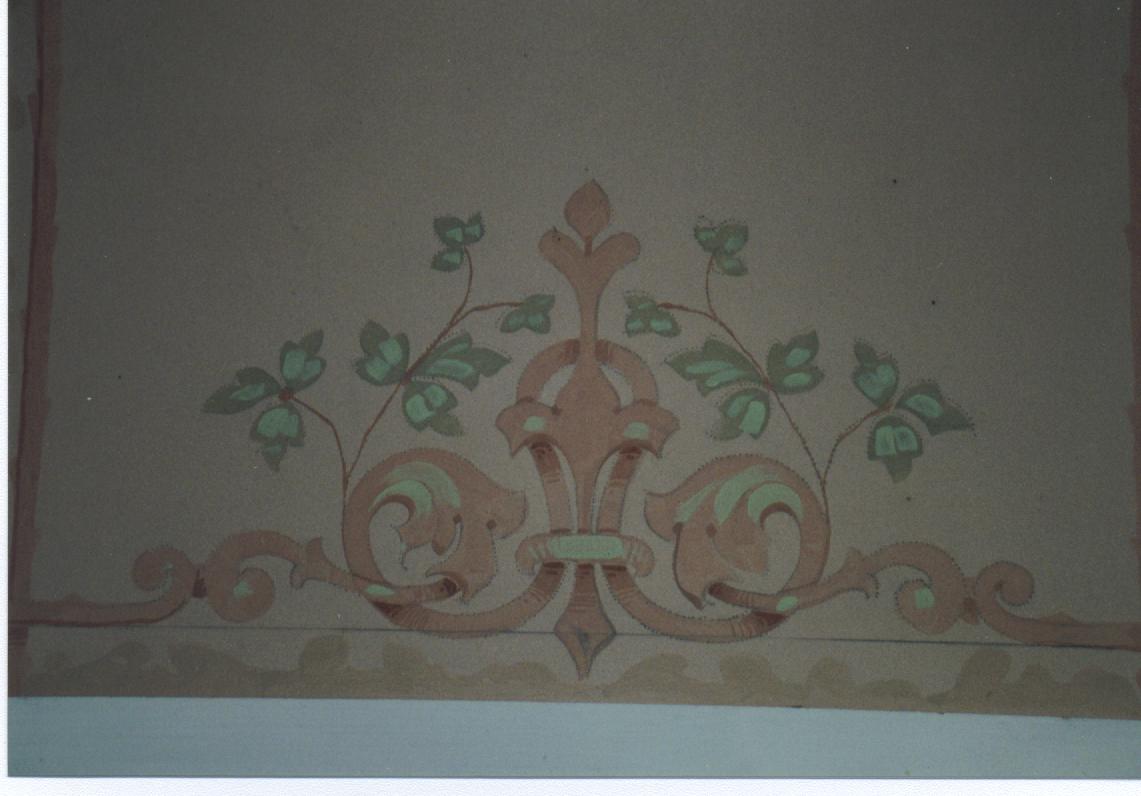Decorative Painting Techniques
By Susan Kaderka
Decorative artists used a variety of techniques to achieve the exquisite ornamentation found in the painted churches of Texas.
Examples of decorative painting in Texas churches, homes and public buildings are featured in an excellent volume: Decorating Texas: Decorative Painting in the Lone Star State from the 1850s to the 1950s (Fort Worth: Texas Christian University Press, 1993) by Buie Harwood, professor of Interior Design at Virginia Commonwealth University.
When you visit painted churches you will see many styles of decorative painting. There is a description of some of the predominant types of painting below.
Click on each image to see a larger picture
-

An example of stenciling style from the church in Dubina.
Stenciling
Stenciling involves the use of a template, usually made of metal or heavy paper, into which a pattern has been cut. The plate is placed on the surface to be decorated, paint is applied and the plate is removed, leaving the pattern painted onto the surface. Often a number of stencil plates were used to create complex, multi-colored designs. Stenciling was typically used to create a small-scale, repeating pattern along a wall, ceiling or floor. Its effect is one of flat, unshaded color.
-

An example of Infill style from the church in Ammansville.
Infill
Infill painting is a variation on stenciling in which the artist transfers a pattern to the surface to be decorated by outlining the cut-out area of a stencil plate with a pencil, paintbrush or piece of charcoal. The plate is then removed and the outlined area is painted in by hand. Infill was often used on large-scale repeating patterns. It creates a slightly more shaded effect than plain stenciling.
-

An example of Freehand style from the church in Praha.
Freehand
Freehand painting refers to murals or other individualized designs, usually representational in character, that are painted without the use of templates or patterns.
-

An example of Marbling style from the church in High Hill.
Marbling
Marbling is a decorative painting technique used to simulate various types of marble, a material that was often too expensive for rural church-building communities in the 19th century. Creating the look of marble required a skilled artisan; it was painstaking work done entirely by hand without any structural aids. In churches, marbling is typically found on columns.
-
No Example Available
Graining
Graining is a decorative painting technique whose effect is to simulate the grain of fine wood. Artists sometimes used combs or rollers to achieve various effects. This technique was often used to make readily available woods like pine and cedar resemble more costly materials like mahogany or rosewood. Graining was typically found on baseboards, moldings and doors.
-

An example of Pounce from the church in Ammansville.
Pounce
Pounce painting is a variation on infill painting, in which the pattern design is transferred to the surface to be decorated by rubbing charcoal over a series of small holes forming the perimeter of the pattern. Once the pattern is transferred in this manner, the plate is removed and the design, represented by charcoal dotted lines, is painted by hand.